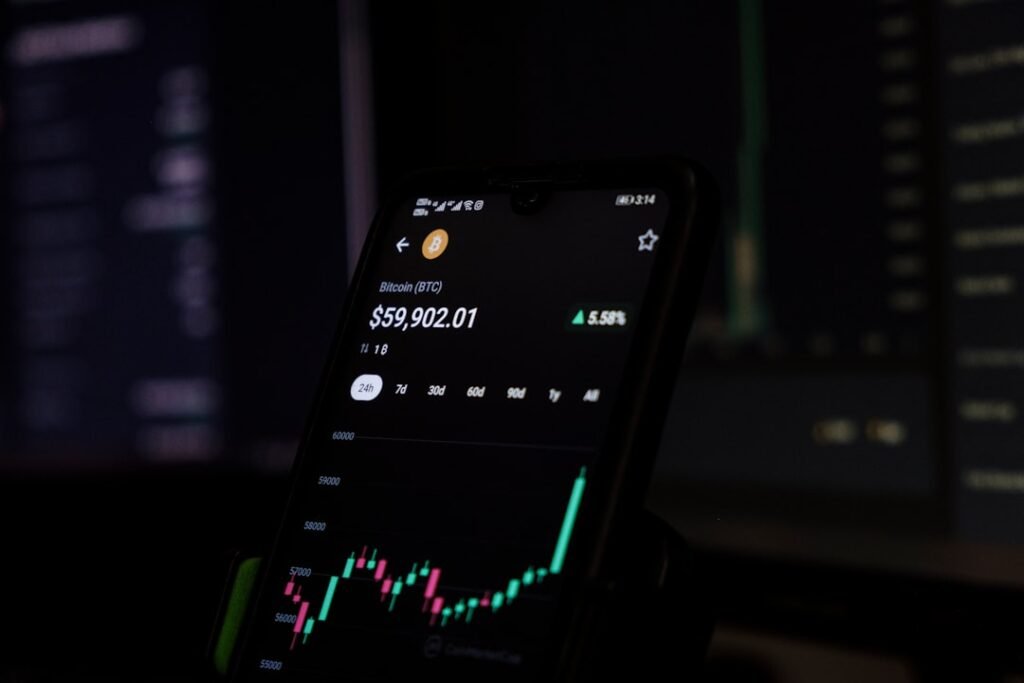Bitcoin Decoded: The Revolutionary Mechanics Behind the $100,000 Digital Gold
Bitcoin isn't just digital money; it's a paradigm shift. This decentralized payment system, birthed from the mind of the enigmatic Satoshi Nakamoto, operates without banks or governments. It’s a peer-to-peer network secured by cryptography and powered by collective consensus. Understanding its core mechanics reveals why it shattered the $100,000 barrier and why its uniqueness is reshaping finance.
The Engine Room: The Bitcoin Blockchain
Imagine a public ledger, replicated across thousands of computers worldwide. That's the Bitcoin blockchain. It's not stored centrally; instead, it's distributed among network participants called ノード. Each node holds a full copy of the ledger, updated simultaneously whenever a new, validated block of transactions is added. This decentralization is foundational to Bitcoin's security and trustlessness.
- Blocks: The Building Blocks of the Chain: Transactions aren't recorded individually but bundled into ブロック. Each block contains crucial information hashed into a unique 256-bit fingerprint:
- Software Version: The Bitcoin client version used.
- Previous Block's Hash: The unique fingerprint of the block immediately before it, creating the chain.
- Coinbase Transaction: The special transaction awarding new bitcoin to the miner who solved the block.
- Block Height: The block's numerical position in the chain (e.g., block #810,000).
- Merkle Root: A single hash representing すべて transactions within the block, enabling efficient verification.
- Timestamp: When the block was created.
- Target: The network's current difficulty target (explained below).
- Nonce: A variable number miners adjust to solve the block's cryptographic puzzle.
This structure is ingenious. Altering any transaction in a past block would change its hash. Since each subsequent block contains the hash of the previous one, the entire chain after the altered block would become invalid. This cryptographic chaining makes the blockchain immutable.
Powering the Network: Bitcoin Mining
Mining is the heartbeat of Bitcoin. It serves two critical functions:
- Validating Transactions: Ensuring no one tries to spend the same bitcoin twice (double-spending).
- Creating New Blocks: Securely adding verified transactions to the blockchain.
Miners (individuals or pools using specialized hardware called ASICs) compete to solve a complex cryptographic puzzle. They take the block's data (including the Merkle root of pending transactions and the previous block's hash) and run it through the SHA-256 hashing algorithm. Their goal? To find a specific nonce value that, when combined with the block data, produces a hash that meets the network's current target.
- The Target & Difficulty: The target is a very large number. The hash must be numerically less than this target to be valid. The lower the target, the harder it is to find a valid hash (more leading zeros required). This difficulty automatically adjusts every 2,016 blocks (roughly two weeks) to maintain an average block time of 10 minutes, regardless of the total computing power (hash rate) on the network. As more miners join, difficulty rises.
- The Race: Miners generate trillions of hashes per second, adjusting the nonce with each attempt. It's a massive computational lottery. The first miner to find a valid hash broadcasts the new block to the network.
- The Reward: The successful miner receives the block reward (newly minted bitcoin) plus any transaction fees included in the block's transactions. This is the incentive driving miners to secure the network.
The Scarcity Mechanism: Halving
Bitcoin's supply is algorithmically capped at 21 million coins. The rate at which new coins enter circulation is controlled by halving.
- Approximately every four years (every 210,000 blocks), the block reward miners receive is cut in half.
- Started at 50 BTC per block in 2009.
- Reduced to 25 BTC in 2012.
- Reduced to 12.5 BTC in 2016.
- Reduced to 6.25 BTC in 2020.
- Reduced to 3.125 BTC in April 2024.
- Scheduled to reduce to 1.5625 BTC in 2028, and so on.
This diminishing issuance creates built-in scarcity, often compared to digital gold mining becoming harder over time. Crucially, mining doesn't abruptly stop at 21 million. Block rewards will continue decreasing in satoshis (1 BTC = 100,000,000 satoshis) until the reward becomes just 1 satoshi per block. The final satoshi is expected around 2140. After this, miners will be compensated solely by transaction fees, continuing to secure the network.
Your Keys, Your Coins: Wallets and Security
A common question: "I bought bitcoin, where is it?" Think of the blockchain as a global, secure database recording every bitcoin's ownership history. You interact with this ledger using a 財布.
- Keys are Everything: Ownership of bitcoin is proven cryptographically.
- Public Key: Like your bank account number or email address. This is your Bitcoin address, shared to receive funds.
- 秘密鍵: Like your bank password or email password. This secret number allows you to 過ごす the bitcoin associated with your public key. Whoever controls the private key controls the bitcoin.
- Wallet Types: Wallets manage your keys and interact with the blockchain.
- Custodial Wallets: A third party (like an exchange) holds your private keys. Convenient, but you rely on their security.
- Non-Custodial Wallets: You control your private keys directly. Offers true self-sovereignty but requires responsible key management.
- Storage Security: How you store keys is critical.
- Hot Storage: Keys stored on a device connected to the internet (e.g., a mobile wallet app). Convenient for frequent use but most vulnerable to hacking.
- Cold Storage: Keys stored offline (e.g., on a dedicated hardware wallet, or a paper wallet). Significantly more secure for holding larger amounts long-term.
- Deep Cold Storage: Cold storage secured physically (e.g., in a safe or safety deposit box). Maximizes security against physical theft and remote attacks.
Making a Transaction: From MemPool to Confirmation
Sending bitcoin involves:
- Initiating the send via your wallet software (specifying recipient address and amount).
- Signing the transaction with your private key (mathematical proof you own the coins).
- Agreeing to pay a transaction fee (paid to miners).
- Broadcasting the transaction to the Bitcoin network.
Your transaction enters the mempool (memory pool), a waiting area for unconfirmed transactions. Miners select transactions from the mempool to include in the next block, prioritizing those offering the highest fees. Once included in a block and that block is validated by the network (achieving confirmations), the transaction is complete. More confirmations make the transaction increasingly irreversible. While targets are 10 minutes per block, confirmation times vary based on network congestion and the fee paid.
Unbreakable Ledger, Vulnerable Keys: Bitcoin Security
The Bitcoin blockchain itself has proven extraordinarily resilient. Its core security lies in:
- Decentralization: No single point of failure. Attacking the ledger requires controlling over 51% of the network's immense computing power – a prohibitively expensive and logistically near-impossible feat.
- Cryptography: The SHA-256 hashing and public-key cryptography securing transactions are currently computationally unbreakable.
- Consensus Rules: The network nodes collectively enforce the protocol rules, rejecting invalid blocks or transactions.
The primary security risks lie 外側 the core protocol:
- Key Management: Losing your private key means losing your bitcoin forever. Storing keys insecurely (especially hot wallets) makes them vulnerable to theft.
- Exchange/Custodial Risk: Platforms holding your keys can be hacked or collapse (e.g., FTX). "Not your keys, not your coins."
- ユーザーエラー: Sending funds to the wrong address, falling for phishing scams.
The Investment Proposition: High Risk, High Potential
Bitcoin's astronomical rise to $100,000+ captures its investment allure, but it's crucial to understand the dynamics:
- 長所だ:
- Growth Potential: Historic exponential appreciation, creating significant wealth.
- 流動性: Massive market cap ($1.9T+) and daily trading volume ($141B+), enabling easy entry/exit.
- Perceived Inflation Hedge: Many investors view its capped supply as protection against fiat currency devaluation (though this is debated).
- アクセシビリティ: Exchange-Traded Products (ETPs) offer regulated exposure for traditional investors, sometimes with added custodial protections.
- 短所だ:
- Extreme Volatility: Prices can swing thousands of dollars daily, unsuitable for risk-averse or short-term investors.
- Transaction Fees: Fees can spike significantly during network congestion, making small transactions costly.
- Environmental Concerns (ESG): Proof-of-Work mining consumes substantial electricity, raising sustainability questions.
- Uncertain Inflation Hedge: Future performance isn't guaranteed to outpace inflation; it's speculative.
- No Safety Net: Direct ownership offers no insurance or recourse if keys are lost/stolen or a non-custodial wallet is compromised. Custodial solutions carry counterparty risk.
The Nakamoto Vision: The Whitepaper Blueprint
Published pseudonymously in October 2008, the Bitcoin whitepaper laid out a revolutionary solution to the double-spending problem without trusted intermediaries. Key innovations outlined include:
- Peer-to-Peer Electronic Cash: Enabling direct online payments.
- Timestamp Server + Proof-of-Work: Using cryptographic hashing and computational work to create an immutable, timestamped transaction history (the blockchain) and achieve distributed consensus on its validity. Mining replaces central authority.
- Incentive Structure: Block rewards and transaction fees motivate miners to secure the network honestly.
- Privacy Model: While all transactions are public on the blockchain, user identities are pseudonymous (represented by public keys). Using a new key pair for each transaction enhances privacy.
- Merkle Trees: Efficiently summarizing transaction data within a block for verification and enabling Simplified Payment Verification (SPV) for lightweight clients.
結論
Bitcoin is more than an asset class; it's a technological breakthrough. Its decentralized blockchain, secured by energy-intensive mining and governed by immutable code, offers a radical alternative to traditional finance. While its price volatility and security challenges demand caution, its core innovation – a trustless, global, censorship-resistant monetary network – continues to drive adoption and challenge the status quo. Understanding its mechanics is essential for navigating the future of digital value.












